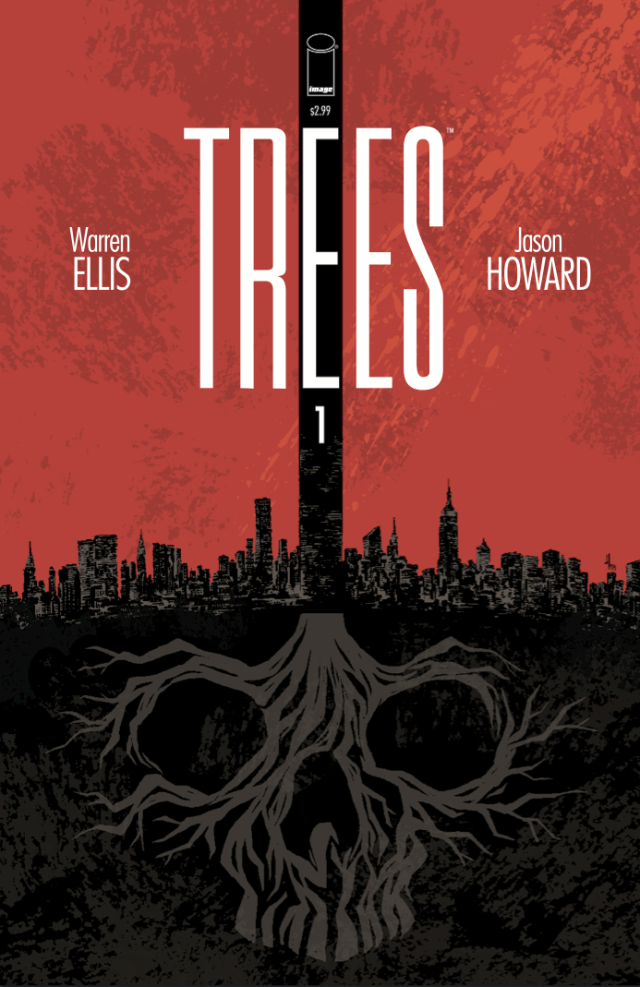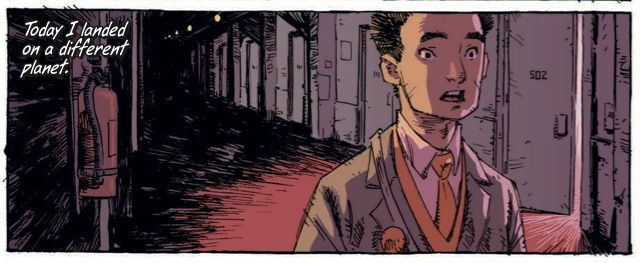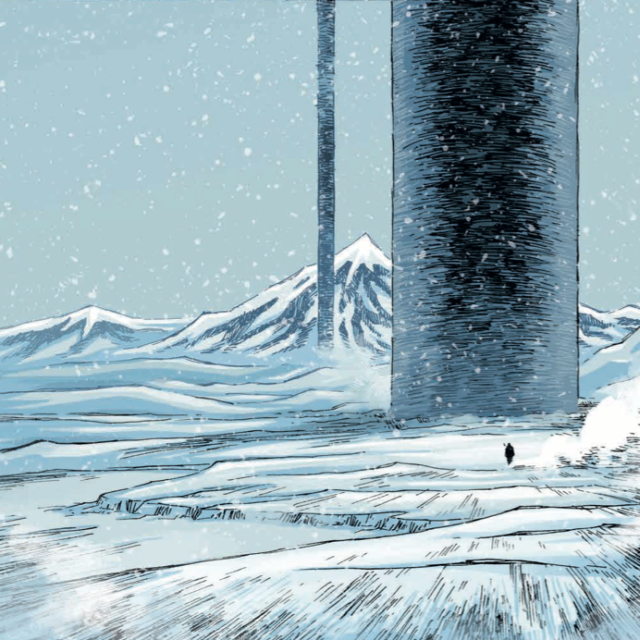This article was originally published at Comics Bulletin on May 27, 2014.

The last line of Trees #1 summarizes the tone of the comic perfectly: “All this is normal.” In spite of the absurdity of massive tree-like aliens planting themselves across the Earth, the characters in Trees have normalized their new surroundings. Life goes on for criminals, politicians, artists, scientists, and all the other variations of humanity that populate the Earth. The normalization of these strange, sometimes horrific aliens allow Ellis and Howard to create a story focused on its characters and the world they occupy instead of one dominated by its concept.
The many characters found in this debut issue are the real attraction and will be the reason for readers to return to the series. The story is divided into four segments separated by region. It moves between Rio de Janeiro, New York City, inland China, and Northern Norway. The choice of locations represents the diversity of the planet Earth. Trees #1 makes an earnest effort to explore the ramifications of these trees from a global perspective rather than focus solely on the English or American outlooks of its creators.
Those ramifications are multi-faceted and create opportune metaphors for very real future issues. The most obvious of these parallels is the journey of Tian Chenglei from his rural home to the Chinese city of Shu. Tian is an artist excited to explore life away from home, moving to a city walled off and allowed to evolve naturally due to the presence of trees. This juxtaposition of traditional Chinese values with Western influence touches upon a very real change occurring within one of the most important nations on Earth. Tian’s excitement quickly turns to fear and shock as he encounters people and ideas that he cannot comprehend. The inclusion of a transgendered person living down the hall from him highlights the shock of changing sexual expectations and standards.

All of the stories in Trees #1 can be viewed through this sort of focus. None of them exist within a vacuum or occur purely in relation to the trees. Everyone examines at least one significant change occurring in the world now. Ellis’ reputation as a futurist is not undeserved and he is exploring the future in every page of this story. These stories are not predictions, but may be seen as extrapolations based on current events. The world is changing and what may seem strange in this tale could be normalized by the time we reach it. Ellis encourages readers to think about the impact of ideas like government surveillance and the liberalization of China by placing them in the context of a story where they are already normalized.
Although the four stories featured in Trees #1 are entirely disconnected from one another, Jason Howard ties the issue together in his art. Certain visual motifs are repeated in each story. Every one contains a single landscaping panel featuring the location of the character and at least two trees. The point of view in these panels slowly moves from top to bottom, initially looking down in Rio, and finally looking up in Norway. This rotation reflects the variety of perspectives on a singular event. The young people in Rio may not be concerned with the trees as they have other pressing matters, but the scientists in Norway are entirely dedicated to studying the aliens on their icy island.
The use of negative space and lack of color is well utilized throughout Trees #1. The gutters of each page are left a stark white. This would not be notable if it were not for how much it dominates some pages and several panels fade into the gutter. The color white indicates a sense of isolation. When Tien first arrives in Shu, he is overwhelmed in a panel where his head is surrounded by white. This use of color, or the lack thereof, connects the isolating effects of society or distance upon the various characters.
The striking white skies that exist in the establishing panels of each locale contrast with the trees to provide them with a powerful presence. They exist where nothing else does, rising far above the landscapes that only occupy a third of these panels. Although the focus of Trees #1 is on the characters, Howard does not allow readers to forget the trees that drive the drama and their ominous nature. All of the characters in Trees may be occupying different roles and countries, but Howard leaves no doubt that they live in the same world.
Trees#1 is an example of the science fiction transcending its genre and approaching the status of literature. It utilizes the oddities and changes in its world not simply to amuse its audience, but to explore the world in which it is being created. Trees focuses on the relatable through its strange premise, rather than exploiting the alien for its own sake. It looks at Earth as we know it and examines where it may be going and how it will affect those of us reading, no matter where we are. Whether it is in the growing power of police states and government observation, the liberalization of China, the increasing influence of capital on politics, or the plight of scientists researching a changing atmosphere, the ideas being explored in Trees relate to the biggest changes of today.
Trees is much like the titular creatures that occupy its cover. The visible surface is intriguing enough to deserve attention, but there is so much more occurring beneath the surface and that’s where readers will find value far greater than the cover price.
